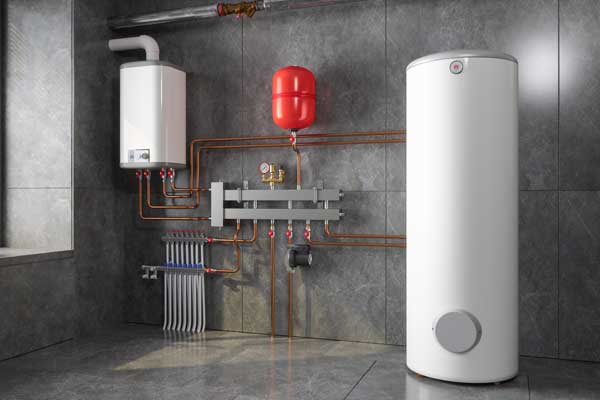Ways to Maintain Your Home's Hot Water System Functioning Well
Ways to Maintain Your Home's Hot Water System Functioning Well
Blog Article
We have stumbled upon this article relating to Tips on Maintaining a Water Heater directly below on the net and believe it made sense to talk about it with you on this page.

Hot water is important for daily convenience, whether it's for a rejuvenating shower or washing dishes. To guarantee your hot water system runs efficiently and lasts longer, normal upkeep is vital. This post supplies practical pointers and insights on how to keep your home's hot water system to avoid disturbances and pricey repairs.
Intro
Preserving your home's hot water system may seem daunting, yet with a couple of easy actions, you can ensure it runs smoothly for several years to find. This guide covers every little thing from understanding your warm water system to DIY upkeep tips and recognizing when to contact professional aid.
Importance of Keeping Your Hot Water System
Routine upkeep not only expands the life expectancy of your hot water system however additionally ensures it runs efficiently. Ignoring maintenance can cause decreased effectiveness, greater energy expenses, and also premature failing of the system.
Signs Your Hot Water System Demands Maintenance
Recognizing when your hot water system requires attention can protect against major problems. Keep an eye out for indicators such as inconsistent water temperature level, strange noises from the heating system, or corroded water.
Understanding Your Hot Water System
Prior to diving right into maintenance jobs, it's valuable to recognize the basic elements of your warm water system. Commonly, this includes the hot water heater itself, pipes, anode rods, and temperature level controls.
Month-to-month Upkeep Tasks
Regular monthly checks can help catch small concerns prior to they escalate.
Flushing the Water Heater
Flushing your hot water heater gets rid of debris build-up, boosting efficiency and prolonging its life.
Checking and Replacing Anode Rods
Anode poles prevent corrosion inside the tank. Examining and replacing them when worn is crucial.
Examining and Changing Temperature Settings
Adjusting the temperature settings ensures ideal performance and security.
DIY Tips for Maintenance
You can perform several maintenance tasks yourself to keep your warm water system in leading problem.
Looking for Leaks
On a regular basis evaluate pipelines and links for leakages, as these can result in water damage and higher costs.
Examining Stress Alleviation Valves
Checking the pressure relief valve ensures it operates appropriately and stops too much stress buildup.
Insulating Pipelines
Shielding hot water pipes decreases heat loss and can save power.
When to Call an Expert
While DIY maintenance is valuable, some concerns require specialist experience.
Facility Problems Requiring Specialist Assistance
Examples consist of significant leakages, electric problems, or if your hot water heater is constantly underperforming.
Routine Expert Maintenance Conveniences
Expert upkeep can consist of extensive inspections, tune-ups, and guaranteeing conformity with security standards.
Final thought
Regular upkeep of your home's hot water system is crucial for performance, longevity, and price savings. By complying with these pointers and understanding when to look for expert aid, you can guarantee a reliable supply of warm water without unanticipated interruptions.
Water Heater Maintenance Tips
Test the TPR Valve
Shut off the power and the cold-water supply valve. Place a bucket under the pipe connected to the temperature-pressure-release (TPR) valve on the top or side of the tank. (This valve opens if the tank pressure gets too high.) Lift the valve’s tab to let some water out, then let go. If water keeps flowing, drain the tank partway, unscrew the old valve with a pipe wrench, and install a new one. Check the Anode Rod
Put a hose to the tank’s drain cock and let out a few gallons of water. Now fit a 1 1/16-inch socket onto the rod’s hex head on top of the heater (or under its top plate) and unscrew the rod. If it’s less than ½ inch thick or coated with calcium, buy a new one, wrap its threads with Teflon tape, put it back in the tank, and tighten securely. Use this segmented rod if headroom above the tank is limited. Drain the Tank and Wash Out Sediment
Drain the remaining water in the tank into the bucket, then stir up the sediment on the tank’s bottom by briefly opening the cold-water supply valve. Drain and repeat until clean water comes out of the hose. Close the drain cock, refill the tank, and turn its power back on. Adjust the Temperature
Find the temperature dial on the side of the tank and unscrew its cover. Adjust the dial to 120 degrees using a flathead screwdriver. For every 10 degrees the temperature is lowered, you can expect to save up to 5 percent in energy costs. Turn the water heater off or the thermostat down to its lowest setting if you plan to be away from home for more than three days. Insulate the Pipes
Buy some self-sticking 3/8-inch-thick foam pipe insulation that matches the pipes’ diameter. Slide the foam over the hot-and cold-water pipes as far as you can reach. Insulating the cold-water pipe prevents condensation in summer. Peel the tape and squeeze the insulation closed. If the pipe is 6 inches or less from the flue, cover it with 1-inch-thick unfaced fiberglass pipe wrap. https://www.thisoldhouse.com/plumbing/21016402/how-to-maintain-a-water-heater

Do you really like more info about How to Maintain a Hot Water Heater in a Few Simple Steps? Place a short review below. We will be delighted to find out your insights about this content. We hope that you come back again later on. Sharing is caring. Helping others is fun. We value your readership.
Book A Service Report this page